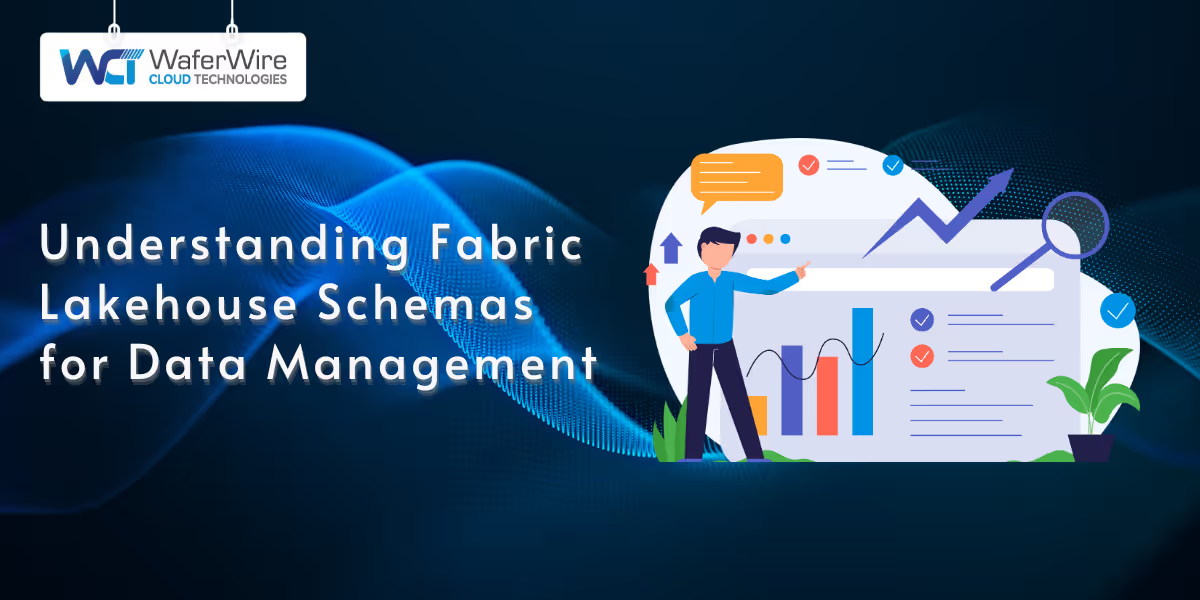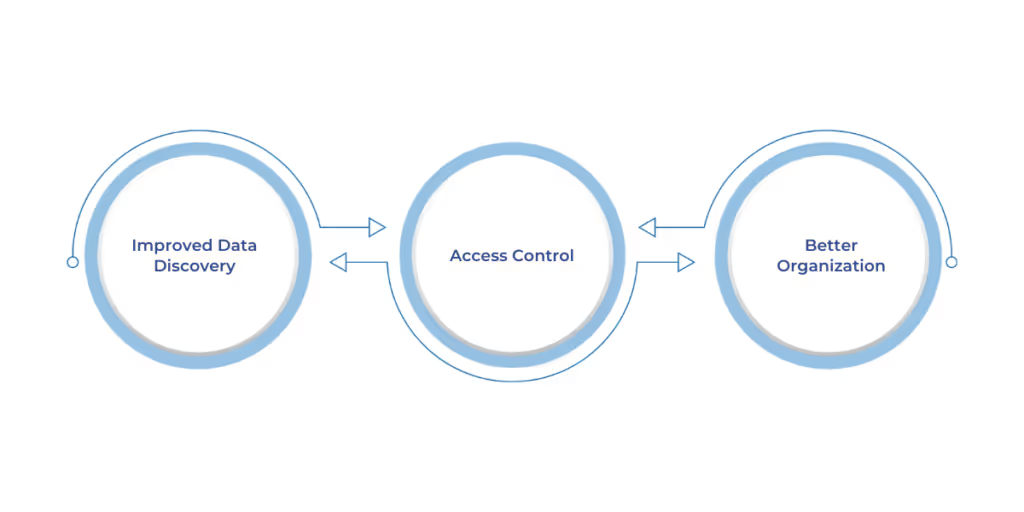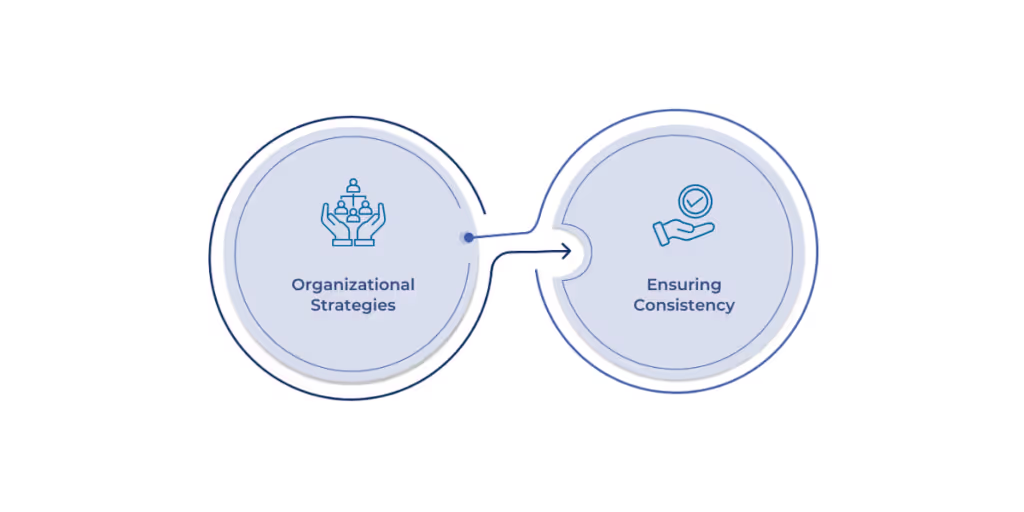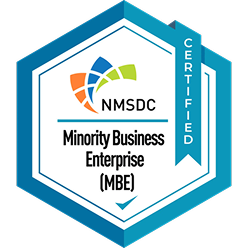

For businesses that rely on precise and structured data, seamless access is crucial. Microsoft Fabric, a unified analytics platform, simplifies the process by providing a comprehensive environment that integrates data storage, processing, and analytics. One of its powerful features is the ability to organize and manage data within lakehouses, ensuring that you can access the right data, at the right time, in the most effective way possible.
In this blog, we will explore the concept of lakehouse schemas, their key features, and how they can be used to enhance data management and analysis. You will also learn how to implement best practices for schema management and tackle common challenges along the way.
Lakehouse schemas are the organizational structure in a lakehouse. They determine the data structure in the lakehouse, dividing it into tables and fields that facilitate easier access, management, and use of data for analysis. In essence, schemas in a lakehouse assist in organizing data stored in the lakehouse in a logical and systematic manner.
The goal of lakehouse schemas is to allow for easy organization and access control, facilitate data discovery, and simplify the complexity involved in handling large volumes of data. Through using schemas, you establish a more structured way of dealing with and retrieving data, making analysis efficient and less error-prone.

With a well-established understanding of the concept of lakehouse schemas and how they function, it is useful to delineate the significant benefits that they offer to your data management approach. No matter the capability of your teams or technology, the volume and variety of data in any large data operation like what you could run and manage in a lakehouse can be overwhelming. Here are some benefits of using schemas:
With a good understanding of what lakehouse schemas are and their benefits, let’s explore how you can create and manage these schemas effectively within Microsoft Fabric.
To begin using lakehouse schemas in Microsoft Fabric, you first need to create and manage them within the platform. Here’s how you can go about it:
When you build a lakehouse in Microsoft Fabric, you will be asked to turn on schema support. This is critical because it sets the stage for organizing your data in the lakehouse. You can opt for applying a medallion architecture or other organization strategies depending on your business requirements. This initial setup will influence the creation of schemas in the lakehouse thereafter.
Also Read: Power BI Premium to Microsoft Fabric Transition Guide
After schema support is turned on, the process of creating a new schema is easy. In Microsoft Fabric, you can create new schemas via the Lakehouse Explorer, where you can organize data into various schemas based on your needs. For instance, you could have individual schemas for sales, inventory, or customers. After defining your schemas, you can allocate tables to them, so each dataset is categorized and organized correctly.
Lakehouse Explorer is one of several tools offered in Microsoft Fabric that will simplify schema management for you. With Lakehouse Explorer, you can manage and organize lakehouse data through a visual interface. You can create, edit, and delete schemas, and you can also edit tables and fields within schemas. Lakehouse Explorer helps model complex data management activities and can typically be used by people with limited technical knowledge.
Once you've set up and managed your lakehouse schemas, you might also need to reference external data sources. Let's explore how schema shortcuts can make this process more efficient.

A powerful feature of Microsoft Fabric’s lakehouse schemas is the ability to create schema shortcuts. These shortcuts allow you to reference data from external sources without having to manually load or duplicate it into your lakehouse.
Schema shortcuts are a method of referencing tables or datasets that exist outside the lakehouse, enabling users to use the data without storing it in the lakehouse physically. This is especially effective when dealing with big datasets that are already stored elsewhere, for example, in cloud storage or external databases. For instance, if you store customer data within an external SQL database, you can set up a shortcut to this data within your lakehouse schema without copying it.
Creating a schema shortcut is as easy as defining the external source and the data tables that you would like to reference. After being established, the shortcut works as an explicit link, and you can query and analyze the data as if it were stored in your lakehouse. This helps to significantly simplify data management by enabling you to have your lakehouse lean while at the same time providing you with access to important external data.
For more information, visit Microsoft’s official documentation.
With schema shortcuts in place, you can now unlock the potential of integrating these schemas with Power BI, bringing your data to life through powerful reporting and visualization.
The primary benefit of the schemas offered by Microsoft Fabric’s lakehouse is the integration with Power BI, Microsoft’s market-leading business intelligence tool. Data from your lakehouse is easily accessible and you can create reports and dashboards with ease.
You can connect lakehouse schemas directly to Power BI and use the data for reporting and visualization with the knowledge that the reports drawn from your schemas reflect the latest information in your lakehouse architecture. This negates the need to run manual data extraction export jobs.
When you have data across multiple schemas, Power BI is able to combine those separate datasets into a single report. By using Power BI's data modeling capabilities, you can incorporate tables from several schemas into one model. This functionality can easily provide a more complete picture through dashboards that provide data from a singular view.
As you begin integrating your lakehouse schemas with Power BI, it's essential to follow best practices to ensure that your schema management remains effective and scalable. Let’s look at some key strategies.

Effective schema management is crucial for maintaining a well-organized lakehouse. Here are some best practices for ensuring your schemas are structured in the most efficient way:
Naming conventions are essential for all schemas and tables. Make sure that the schemas and tables have descriptive names that create context and deliver understanding to the name and content of the data being represented. The organizational scheme should reflect your business processes, which also helps keep the relevant data categorized correctly.
When designing your schemas, aim for consistency in how data is structured. Use similar table structures across schemas, and ensure that relationships between data elements are well defined. This consistency will make it easier for users to query and analyze data across different schemas.
With best practices in place, it’s time to focus on how to control and manage access to your schemas to ensure data security. Let’s explore the role of permissions and access control in this process.
Managing access to your lakehouse schemas is critical for data security. Microsoft Fabric offers robust role-based access control (RBAC) to ensure that only authorized users can access specific datasets.
Default schemas can be applied to users according to their role with the organization. This allows for a simplified way to provide the user with access to the data relevant to them without having to set permissions every time you have another user.
You can set permissions for a lakehouse schema or the tables in the lakehouse schema. This provides the ability to grant access to users to only the applicable datasets that they are supposed to use or see. This lowers your risk of exposing sensitive data while still providing an appropriate level of access for users needing to access certain datasets.
While lakehouse schemas offer powerful features, there are some limitations you should be aware of. Let's explore these limitations and considerations to help you plan your schema management strategy effectively.

While lakehouse schemas offer powerful tools for data management, there are some limitations to consider. Understanding these limitations will help you plan for potential challenges during implementation.
As of now, there may be some constraints around schema customization and advanced features. For example, certain data transformation processes might require additional tools or manual intervention. These limitations are typically addressed with regular updates from Microsoft.
When designing your schemas, keep in mind the size of your data, how it will grow, and the complexity of your queries. Ensure that your schema design is scalable and flexible enough to accommodate future changes.
Microsoft Fabric lakehouse schemas provide a great solution for structuring, managing, and querying data in a lakehouse. Through the use of schemas, you can enhance data discovery, security, and enable your team to simply query and analyze data from various sources. As you embrace these tools, your data management and reporting process will be greatly improved.
If you're prepared to adopt Microsoft Fabric's lakehouse schemas and enhance your data management processes, WaferWire can assist. From the design of schema to integration with Power BI, our Microsoft and AI specialists can assist you throughout the setup process. Contact WaferWire today and see how we can optimize your data strategies.
Q1. What is a lakehouse schema in Microsoft Fabric?
A lakehouse schema is a way to organize and structure data within a lakehouse, ensuring that data is categorized and easy to access for analysis and reporting.
Q2. How do I create a lakehouse schema in Microsoft Fabric?
You can create a lakehouse schema through the Lakehouse Explorer in Microsoft Fabric by defining the structure and assigning tables to the schema for easy management.
Q3. Can I integrate lakehouse schemas with Power BI?
Yes, you can easily integrate lakehouse schemas with Power BI for reporting and visualization, enabling you to create comprehensive dashboards from your data.
Q4. How can I manage permissions for lakehouse schemas?
Permissions for lakehouse schemas can be managed using role-based access control, ensuring that users only have access to the data they are authorized to view or edit.
Q5. What are the benefits of using lakehouse schemas?
Lakehouse schemas improve data organization, enhance security, and make it easier to manage and analyze data across multiple sources, improving efficiency and decision-making.

